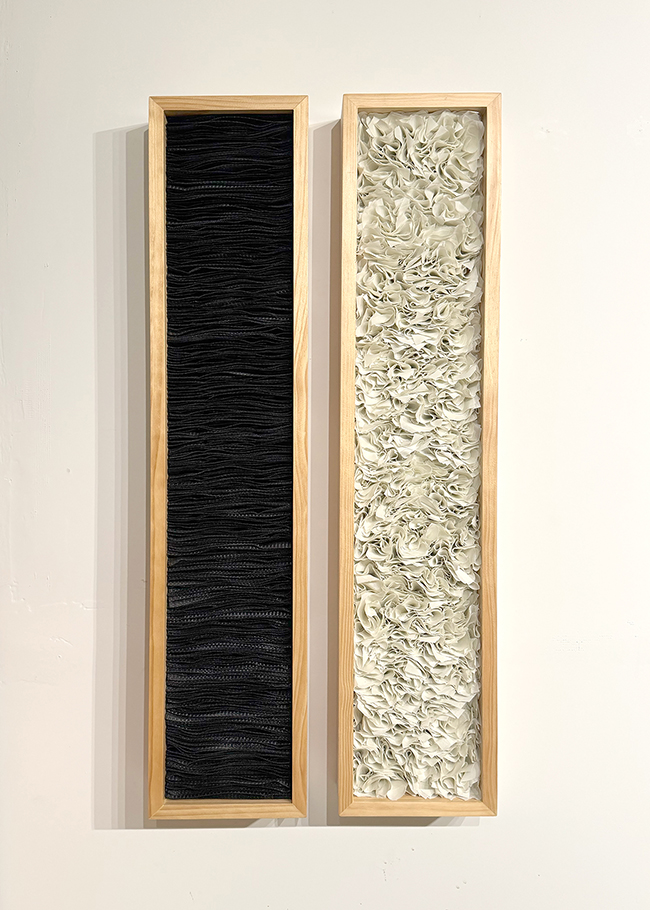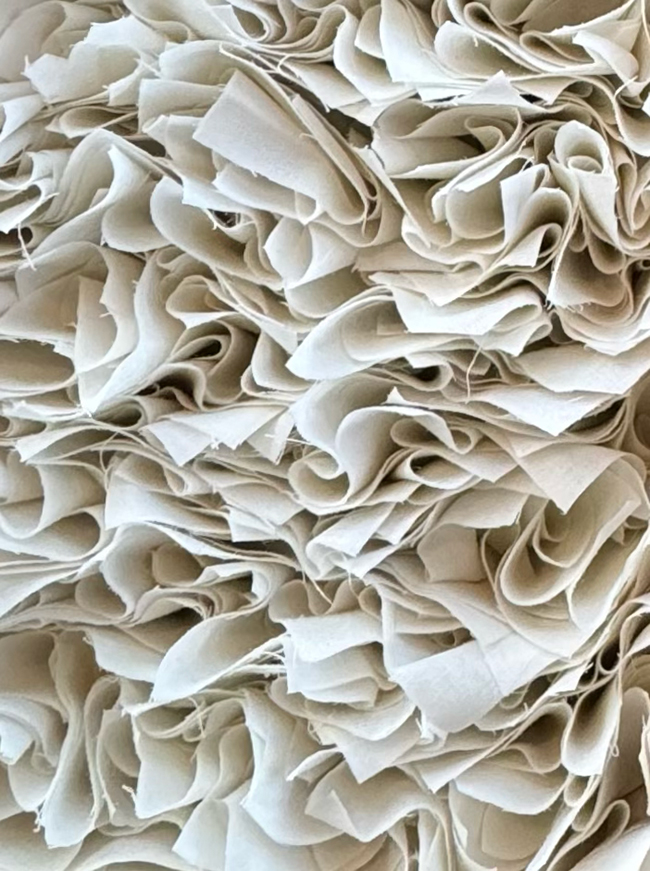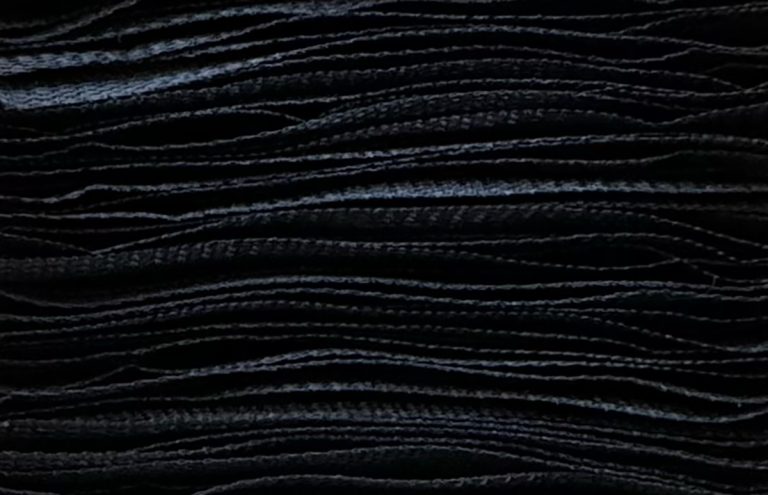Natalie Dunham doesn’t approach art as a form of decoration. She’s not concerned with spontaneity or splashy gestures. Her work is grounded in structure, repetition, and form. She builds rather than paints, composes rather than sketches. Her pieces feel deliberate but never cold—there’s a kind of steady heartbeat running through the grids, curves, and sequences she creates. Dunham talks about her process as a kind of emotional pacing. It’s not a search for beauty but for balance. She works slowly, methodically, layering and repeating until a piece feels complete—not just physically, but conceptually.

She earned her BFA in painting from Birmingham-Southern College in 2007, then shifted focus to sculpture during her MFA studies at the Maryland Institute College of Art, which she completed in 2010. Today, her practice spans continents, with studios in both the U.S. and Europe. She’s shown her work across the United States and internationally, but she doesn’t treat visibility as the endpoint. For Dunham, the making is the message.

Dunham’s current body of work is a continuation of her process-based practice, defined by minimal forms, repeated gestures, and accumulated structures. She constructs three-dimensional material studies that often appear simple at first glance—basic geometric shapes, lines, and shadows—but the closer you get, the more you notice the tension between precision and imperfection.
Each piece in the series is titled with a number. No names. No metaphors. Just a numerical sequence, almost like a filing system. These numbers act like timestamps or coordinates. They don’t describe the piece as much as they place it within a growing archive. Dunham uses these titles to document material choices, patterns, and structural shifts in her process over time. It’s not about labeling. It’s about charting.
The works themselves might be made of wood, plastic, metal, paper—materials often found in everyday life, stripped of their usual functions and repurposed into abstract arrangements. Some pieces lean into architectural forms—grids, columns, stacked planes—while others feel more like diagrams of energy or motion. There’s a push and pull in her constructions. They’re both rigid and flexible. They hold their shape but suggest movement or change.
What makes Dunham’s practice different is her commitment to repetition as a form of expression. She’s not repeating for effect—she’s repeating to explore. In each loop, line, or layer, there’s a record of time spent. The process is the point. Some pieces might take weeks to build, even if they appear minimal. The challenge is in the patience it takes to make something so tightly controlled, and yet still leave space for uncertainty.
There’s also a psychological undercurrent to the work. By removing figurative content, Dunham shifts the focus to behavior—how we see, how we interpret, how we follow or break patterns. Her compositions feel like visual logic problems: restrained but absorbing, organized but not overly resolved. You’re invited to look closer, not just at the form, but at what it suggests about control, habit, and change.
Dunham’s sculptures and material studies don’t rely on narrative or symbolism. Instead, they invite reflection through structure. The viewer doesn’t need to “get it” in a traditional sense. There’s no trick or hidden meaning. What you see is what she’s made—but the longer you stay with it, the more you start to see the labor behind it, the small variations, the deliberate decisions, and the invisible time.
Even her use of the word “study” is revealing. These aren’t meant to be final forms. They’re part of a progression—part of a slow, ongoing investigation into how space, material, and repetition interact. In that way, her work is less about showing and more about asking. What happens when you repeat something a hundred times? What’s the difference between control and order? How do materials speak when we let them be simple?
In a time when art is often expected to speak loudly, Dunham’s practice offers a quieter proposition. Focus. Build. Repeat. Let the form emerge. Let the meaning take its time. She’s not chasing trends or spectacle. She’s building systems—carefully, honestly, and with an eye toward something lasting.

